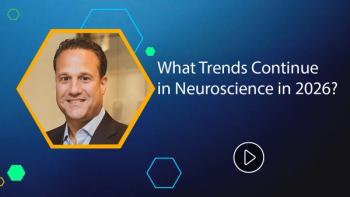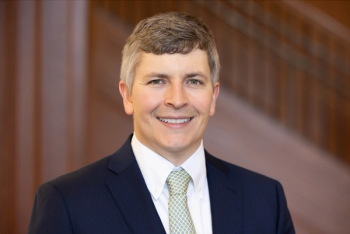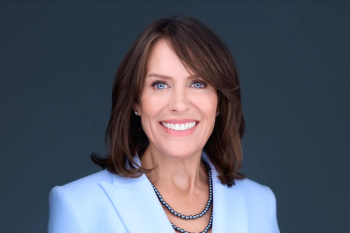
- Pharmaceutical Executive-01-01-2021
- Volume 41
- Issue 1
Pharm Exec Hits 40
Looking back at 1981.
Welcome to our first installment commemorating the 40th anniversary of Pharmaceutical Executive. In the year that its inaugural issue rolled off the presses, Ronald Reagan entered the White House. “We must act today in order to preserve tomorrow,” he said. On March 30, 1981, he was the victim of an assassination attempt. It didn’t cow him. “I forgot to duck,” the President told his wife, Nancy, as he was wheeled into surgery. Less than a month later, he was back in the Oval Office.
Away from politics, the Oakland Raiders beat the Philadelphia Eagles 27–10 in the Super Bowl, Americans John McEnroe and Chris Evert both triumphed at Wimbledon, and the Los Angeles Dodgers won the World Series. People rushed to see Raiders of the Lost Ark and Superman II on the big screen, while flocking to buy the late John Lennon’s “Starting Over,” REO Speedwagon’s “Keep On Loving You,” and Kim Carnes’ “Bette Davis Eyes” from record stores. On TV, Andy Kaufman flipped out on Fridays and Barbara Walters asked Katherine Hepburn what kind of tree she would be. The Waltons came to an end, while Dynasty started. This, as much as anything, was an early indication of the decade’s shifting trends.
The pharma landscape
Anticipating a relaxation of regulations around drug development (among other factors), analyst Ronald M. Nordmann declared that the 1980s would be “a golden age of drug research.” (New York Times [NYT], May 17.) Already, SmithKline’s stock had multiplied eightfold since 1975; in 1980, its ulcer remedy, Tagamet, had passed Valium as the world’s largest-selling drug. Merck was the most profitable pharma, earning $415.4 million. There were high hopes for increased drug approvals. FDA had approved only 12 new drugs in 1980. The new heads of the HHS and FDA, Richard S. Schweiker and Dr. Arthur Hull Hayes Jr., were expected to shorten this lag. This they achieved; by the end of the year, FDA had approved 27 drugs.
Meanwhile, biotech was taking off in Boston. The area was “witnessing a small explosion in genetic engineering,” said NYT (Feb. 26). Dutch organization Biogen and the newly formed Genetics Institute had set up base there. But these companies had no distribution networks and couldn’t wait eight years for FDA approval, warned Arthur D. Little’s Dr. Alan Burg. Their focus should be “to deliver the microorganisms to the pharma companies and let [pharma] worry about marketing the products.” Biogen seemed undeterred.
“Our objective is to become the IBM of biotechnology,’’ said the company’s US boss, Robert A. Fildes. In some cases, he explained, Biogen would hand its findings over to large pharma; in others, it would develop and market products itself.
There were reputation problems, even then. The aforementioned Valium had fallen from a peak of more than 50 million prescriptions in 1975 to below 33 million following reports of abuse and addiction.
And pharma was at the mercy of emotional media campaigns. The rare disease issue was sullied with an unhelpful image of “patients ravaged by disease, or even dying, because there is not enough profit in the drug that could save them,” wrote Robert Reinhold (NYT, March 17). He noted that TV’s Quincy, Jack Klugman, moved by the show’s inclusion of a boy with Tourette’s syndrome, had gone before a Congressional subcommittee to ask, basically, “Why doesn’t somebody do something?” It wasn’t that easy. Reinhold pointed to a bill introduced by Democrat Rep. Theodore S. Weiss to set up a special National Institutes of Health office to stimulate orphan drug development, but “no swift solution” seemed likely.
The industry’s reputation was improving in other areas, however. In July, Dr. Charles A. Sanders, director of Massachusetts General Hospital, “stunned his colleagues” when he took a job as vice president of E.R. Squibb & Sons. This was an indication, said commentators, that academic physicians no longer regarded working for drug companies as a “dirty task.”
Julian Upton is Pharm Exec’s European and Online Editor. He can be reached at
Articles in this issue
almost 5 years ago
2021 in Focus: Pharm Exec’s Annual Industry Outlookalmost 5 years ago
‘Breakthrough’ Balancing Act: The Decline of the Value Propositionalmost 5 years ago
Prescriber Hesitancy on COVID Vaccinesalmost 5 years ago
More Cloud on the Horizon for Pharmaalmost 5 years ago
A New Year for Sustainable Governancealmost 5 years ago
Bound By Bloodalmost 5 years ago
Pharmaceutical Executive, January 2021 Issue (PDF)almost 5 years ago
Pharma in Spotlight as Pandemic Continues in 2021almost 5 years ago
Six Degrees of 2020almost 5 years ago
Why Investing in Tech Education Is ImportantNewsletter
Lead with insight with the Pharmaceutical Executive newsletter, featuring strategic analysis, leadership trends, and market intelligence for biopharma decision-makers.





